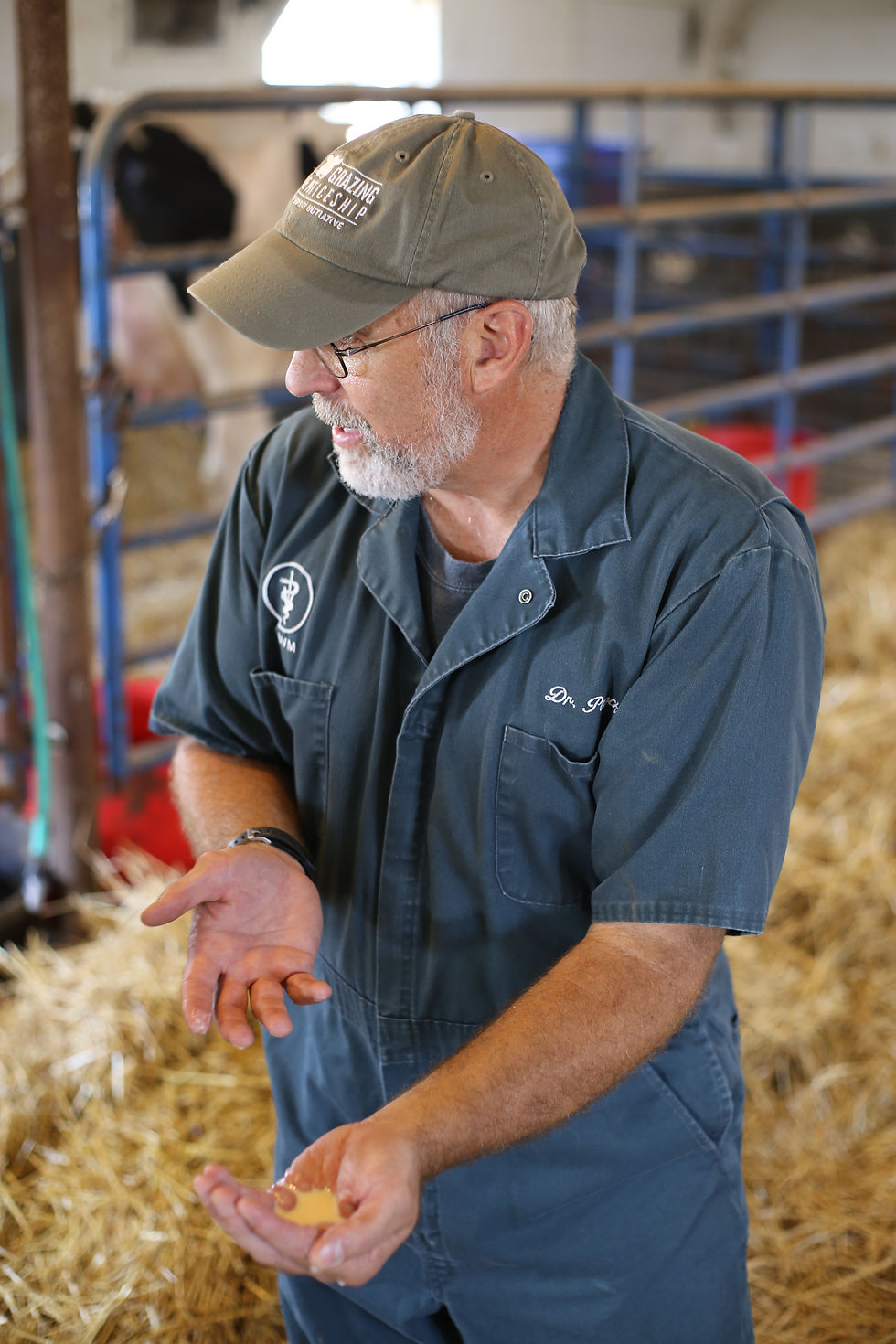Heat Stress in Cows
I worked on this multimedia package with Juliana Tornabene, Samantha Rosenthal and Qinghui Kong. I made the social video and wrote the script for the main piece as well as filmed b-roll and conducted interviews. Along with my team, I helped make the infographic. I also helped edit the main piece and helped to write captions for the photo story.
COLUMBIA- Prolonged heat stress this year has caused about 25 percent of dairy cows at MU Foremost Dairy Research Center to experience pregnancy loss, said Scott Poock, MU Associate Extension Professor.
Farmer Rick Scheer of New Haven said he has noticed a definite increase in pregnancy loss this summer.
“We’ve had most short term, early miscarriages, we’ve had a few late term miscarriages,” Scheer said, “That’s fairly unusual, so it makes you wonder how much of an effect the summer had on that.”
Poock said that the high temperatures and humidity this summer do affect a cow’s pregnancy. Poock is also the veterinarian at MU Foremost Dairy Research Center, and said that he has never seen loss like this.
“We expect during the summer to maybe have 10, 12 percent loss,” said Poock, “We saw 25 percent loss, which is more than twice of what you normally would expect.”
Poock said he normally checks a pregnant cow about 28 days into their term to check the embryo’s heartbeat and development. After about 60 days into the pregnancy, Poock goes to check the embryo again, and this is when he notices the pregnancy loss.
But it’s not just the high heat during the day that is causing the increase in pregnancy loss.
MU Environmental Physiologist Professor Don Spiers said, “People tend to think that it’s the daytime heat, but… if it doesn’t drop below 80 at night for three nights in a row, they’re going to start having major problems.”
MU Atmospheric Science Professor Anthony Lupo has noticed this trend as well.
“The problem with this summer is that it’s been consistently hot, from about the end of May through early September, and we just didn’t seem to get any breaks,” Lupo said.

MU Associate Professor Scott Poock (cq), left, and MU Dairy Specialist Stacey Hamilton, right, examine a cow ultrasound at MU Foremost Dairy Research Center in Columbia, Missouri, Monday, September 17, 2018. Poock pointed to the healthy, fully mature heart of a calf born later that day.

MU Associate Professor Scott Poock (cq) holds the calf’s first meal, colostrum, at MU Foremost Dairy Research Center in Columbia, Missouri, Monday, September 17, 2018. Poock explained that this is the first form of milk produced by the mother after giving birth. This first feeding is crucial because it provides the nutrients the calf needs to begin proper development

The mother cow cleans her newborn calf at MU Foremost Dairy Research Center in Columbia, Missouri, Monday, September 17, 2018. The calf will stay inside the barn for two weeks or more so it can be protected from the heat.

MU Associate Professor Scott Poock (cq), left, and MU Dairy Specialist Stacey Hamilton, right, examine a cow ultrasound at MU Foremost Dairy Research Center in Columbia, Missouri, Monday, September 17, 2018. Poock pointed to the healthy, fully mature heart of a calf born later that day.
The cows are not receiving these breaks because the temperatures have not been decreasing at night. Lupo said cows are not getting the crucial cool down time that they need to recuperate and relax.
This summer, the average temperature for the last five months has been over 70 degrees, which hasn’t happened since 1941. This is the eighth hottest summer in Columbia since 1889.
Lupo says that these temperatures and changes can be attributed to climate change.
“The jet stream for the northern hemisphere has been remarkably steady this summer, which is a little bit more unusual,” Lupo said.
Jet streams are thin paths of air that push air through the atmosphere. The North Carolina Climate Office explains that jet streams are important because they create the highs and lows in temperature and affect rain amounts. Temperatures are controlled by two different winds, El Niño and La Niña.
Lupo said that El Niño winds were expected to occur by now, which cools down the surface and causes more rain. However, we are still experiencing La Niña winds, which tend to cause hotter temperatures.
Around 70 degrees is a turning point when it comes to cows’ health. Scheer says 68 degrees is the highest temperature that a cow can function without stress. If it gets any hotter, cows must use their energy to lower their internal body temperature. This can cause problems in fertility, carrying a calf, and milk production.
MU Animal Sciences Professor Matthew Lucy explained that it can be a cycle of events when it comes to a pregnant cow’s health.
“So if a cow gets too hot, the first thing she does is stop eating,” Lucy said. Food generates heat once it is digested, which is likely the last thing a cow would want if they’re already hot. This depletes a cow’s nutrients, especially when they need to be passing on nutrients to their baby.
Although temperature is an uncontrollable factor, farmers have found ways to keep their cows cool as best as they can. Fans and sprinklers are used at many Mid-Missouri dairy farms to control this issue, but it’s not a permanent solution to climate change. As heat continues to rise, dairy cows will continue to lose their babies.